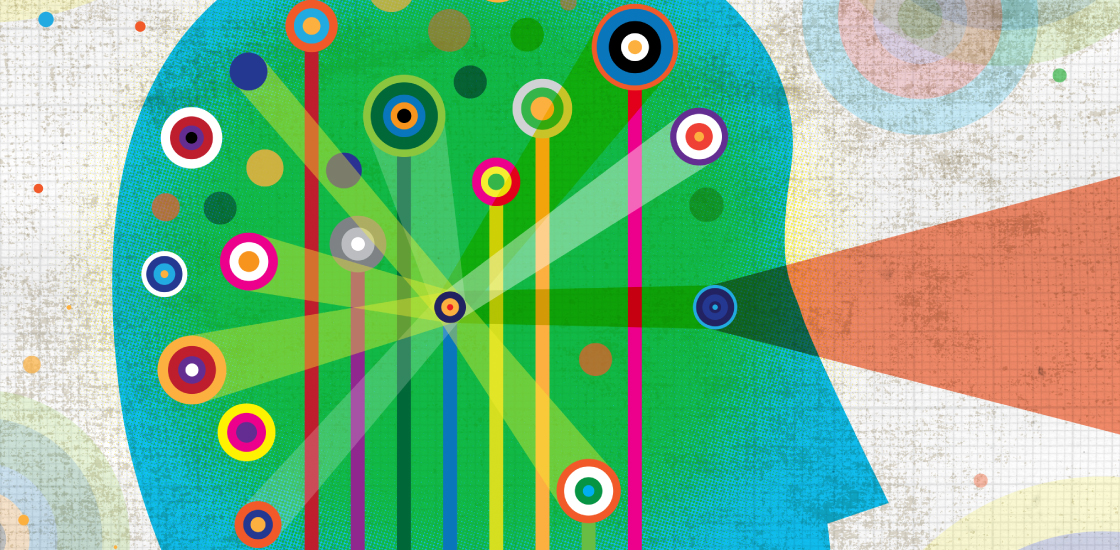
Editor’s Note
Spectrum’s house style is to refer to ‘people with autism’ rather than ‘autistic people.’ But we made an exception in this instance because of an author’s preference.
Getting to the top generally requires years of hard work, committed mentors and many missteps along the way.
We asked a few of the most distinguished autism researchers to share memories from their first autism study, including their initial assumptions and what they’ve learned since. Their answers reveal the origins of modern theories as well as how much ideas about autism have changed over the years.
Uta Frith:
My first study was inspired by an ingenious experiment by my wonderful Ph.D. supervisors, Beate Hermelin and Neil O’Connor. They compared recall for random words (for instance, “fish, ate, they, fresh”) and for the same words when they formed sentences (“They ate fresh fish.”). Normally, we expect recall for words in sentences to be a lot better than recall for words in random strings. But this was not the case for autistic children. I was fascinated by this finding and wanted to repeat it. This led to my first and only paper ever accepted without revision, in 19691.
In that first study, I recorded myself saying strings of words and played them back to the children and asked them to repeat what they heard. I soon gave up using the tape recorder, which only distracted the children. I found they willingly did the task as long as I spoke the words to them directly.
The results of the experiment confirmed the findings of my supervisors: For the children with autism, there was only a small difference in how many words they recalled when I said strings of unconnected words and when I said sentences.
This set me on the trail of a theory I later termed ‘weak central coherence.’ This theory holds that children with autism struggle to consolidate information and see ‘the big picture.’ By contrast, they excel at remembering details. It may explain why children in my first experiment remembered random strings of words so well.
Furthermore, the tape-recorder misstep taught me something about people with autism. I had falsely assumed that children with autism would perform much better with an impersonal machine than with a human. How wrong I was. I was relieved to throw aside the idea that ‘autism’ meant ‘asocial.’
Catherine Lord:
The first autism research I was involved in was as a student-therapist and data collector for Ole Ivar Lovaas’ 1987 study on applied behavioral analysis for children with autism. Contrary to Lovaas’ reports that the therapy makes children with autism “indistinguishable from typical children,” I didn’t see any miracles. But I did see one child begin to speak in sentences. Another one, however, never was able to consistently imitate speech sounds.
I don’t think the second child made it into the paper Lovaas wrote. In those days, there was no expectation that a researcher would describe every child he or she worked with. Samples were almost always ‘convenience samples’ of whomever the researcher wanted. This is still something that occurs in genetics and neuroscience, but has been rectified to a great extent in behavioral research.
The first autism study I led was at the University of North Carolina’s TEACCH Autism Program. I took existing TEACCH data and looked at intelligence quotient (IQ) changes from first assessment to a follow-up two years later.
It was extremely unsophisticated in terms of analyses. We just took whatever data we could find and did not control for missing data or attrition. We found that, in general, IQs went up from preschool to school age.
It’s ironic that today we still find that IQs often go up from first assessments to follow-up assessments several years later, even with the same test. This is because children with autism come to better understand what is expected of them, are more motivated to carry out tasks and please strangers, and have better motor control. If this is our definition of being smart, they get smarter.
Judith Miller:
My first autism study, back in 1997, was titled “Did Asperger’s cases have Asperger disorder?”2
The idea came from comments my masters mentor Sally Ozonoff made in the margin of my thesis. In the introduction, I had speculated whether the four cases in Hans Asperger’s original paper would meet the criteria for autism in the newly published “Diagnostic and Statistical Manual of Mental Disorders IV”. Sally wrote, “Let’s do this study!!”
So I asked clinicians to apply the new diagnostic criteria for ‘Asperger’s Disorder’ and ‘Autistic disorder’ to Hans Asperger’s original cases.
At the time, autism was considered a rare condition, so raising awareness of its various presentations was really important to boost its recognition. Nowadays, we have the opposite situation: The spectrum can start to feel so broad it’s becoming important to identify what’s distinct about autism. Instead of focusing on how big the autism umbrella should be, I’m now focused on how to identify the smallest group of characteristics that are highly specific to the condition.
Hopefully, we can identify some characteristics that are so specific to autism that we can use them to identify the underlying biological mechanisms. And perhaps we can identify some characteristics that are so rarely seen outside of autism that they, when present, would signal the condition even to a non-specialist. That would increase access to an early and accurate diagnosis, and help folks with the condition achieve their full potential.
References:
Recommended reading

Expediting clinical trials for profound autism: Q&A with Matthew State

Too much or too little brain synchrony may underlie autism subtypes
Explore more from The Transmitter

Mitochondrial ‘landscape’ shifts across human brain

